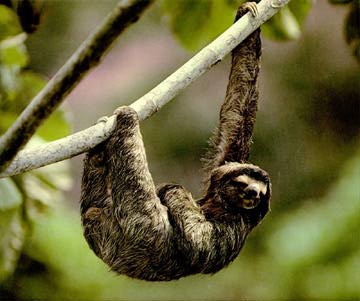 |
 |
Anteaters, armadillos, and sloths are a group of eutherian mammals known as the Xenarthra. They were once placed in the order Edentata and are still often referred to as edentates, a word that means "toothless." Although xenarthrans such as anteaters are indeed toothless, the giant armadillo has as many as 100 teeth, more than almost any other mammal. Members of the mammalian group Edentata not only include the 31 living species of armadillos, true anteaters, and tree sloths, but also contain eight families of extinct ground sloths and armadillo-like animals. Together, the living families and extinct families constitute the Xenarthra.
 |
 |
Living xenarthrans : On the left, a sloth. At right, a hairy armadillo from Santa Cruz, Argentina.
Xenarthrans are a small group of insectivores and herbivores of small to medium body size (up to around 60 kg). In the past however, xenarthrans were much more diverse and numerous. They radiated into about a dozen families in South America, including not only the groups known today but also animals such as the extinct giant ground sloths and giant armored gylptodonts. Several groups of xenarthrans, mainly the ground sloths and armadillos, successfully crossed the Central American land bridge to North America when it formed during the Pliocene. Today, only one of these species, an armadillo (Dasypus novemcinctus), still survives there; the majority of living species live in Central and South America.
Click on the buttons below to learn more about Xenarthra
For more information about xenarthrans:
Read about living xenarthrans at the University of Michigan's Animal Diversity Web.
The Bibliography on Armadillos lists hundreds of articles published on that group, and even covers papers published before 1900!

Sources:

